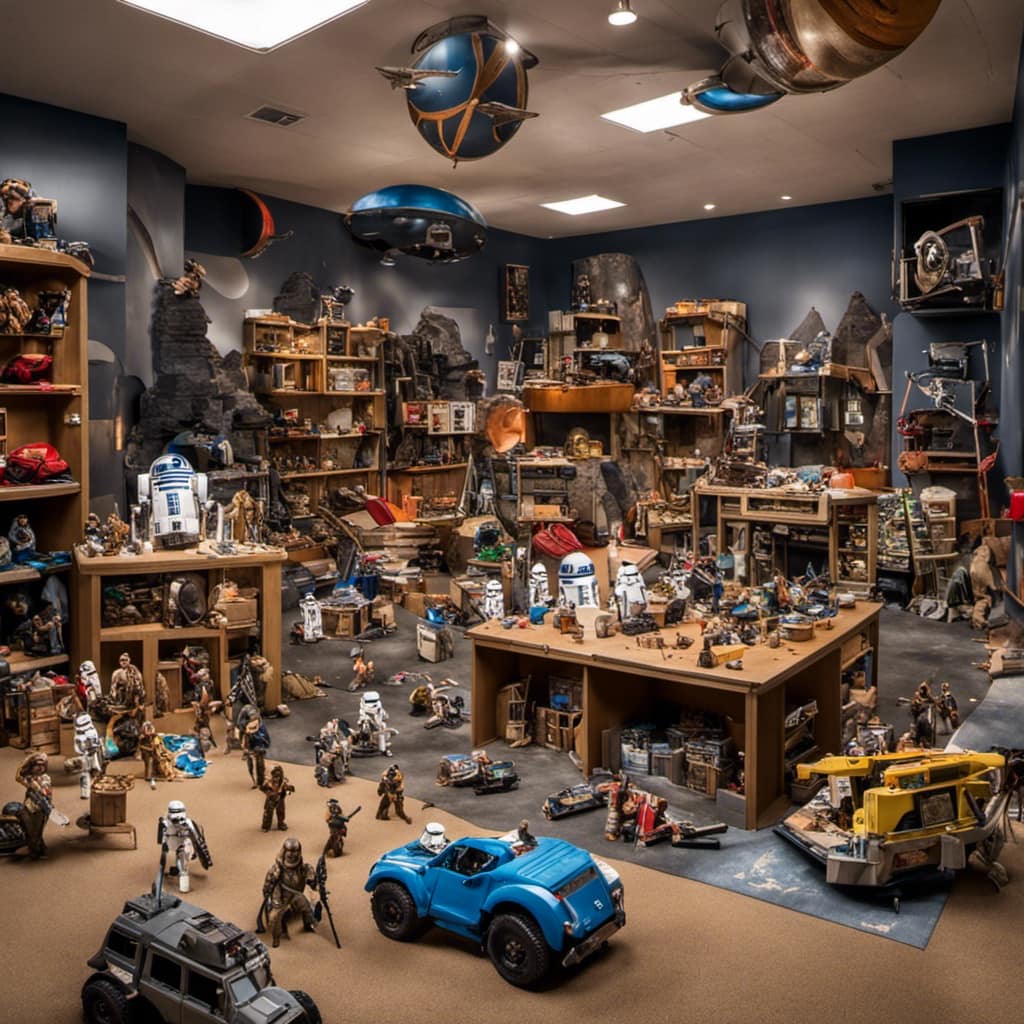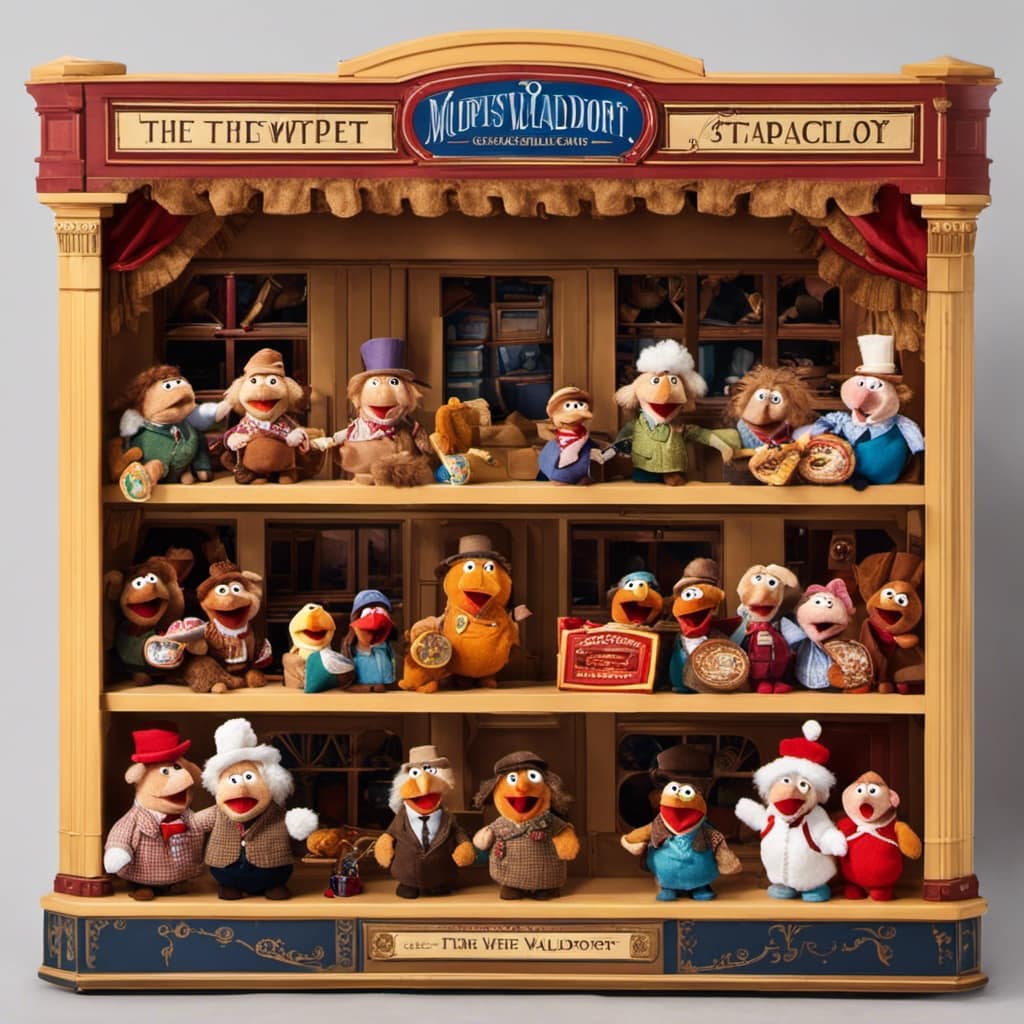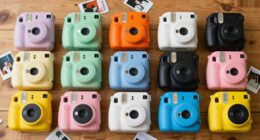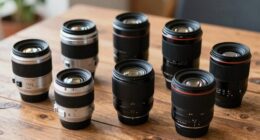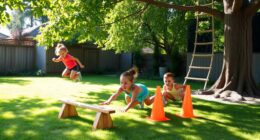As a preschool teacher, I understand the challenges of keeping toys neat and accessible for young children. That’s why I’m excited to share with you the Ultimate Guide to Preschool Toy Storage and Organization.
In this comprehensive guide, you will find practical strategies and methods for grouping, sorting, and storing toys in a way that promotes a playful and engaging environment.
From choosing the right storage containers to implementing a toy rotation system, this guide will help you create a functional and organized toy storage system that benefits both teachers and students.
Let’s dive in and discover the secrets to successful preschool toy organization!
Key Takeaways
- Grouping and sorting toys together using clear plastic bins, stackable baskets, fabric bins, or toy chests for storage.
- Maximizing storage space with shelving and cubbies, and utilizing wall storage solutions with shelves and hooks.
- Involving children in selecting toys for rotation and teaching decision-making and ownership through toy rotation.
- Organizing specific toy categories such as stuffed animals, board games, puzzles, school supplies, and art supplies with designated storage containers and labeling.
Choosing the Right Storage Containers
I’m going to choose clear plastic bins and stackable baskets for my toy storage containers because they will make it easy to see and access the toys.
There are different types of toy storage containers available, each with their own pros and cons. Clear plastic bins are great because they allow you to easily see what toys are inside without having to open every container. They are also durable and easy to clean, making them a practical choice.
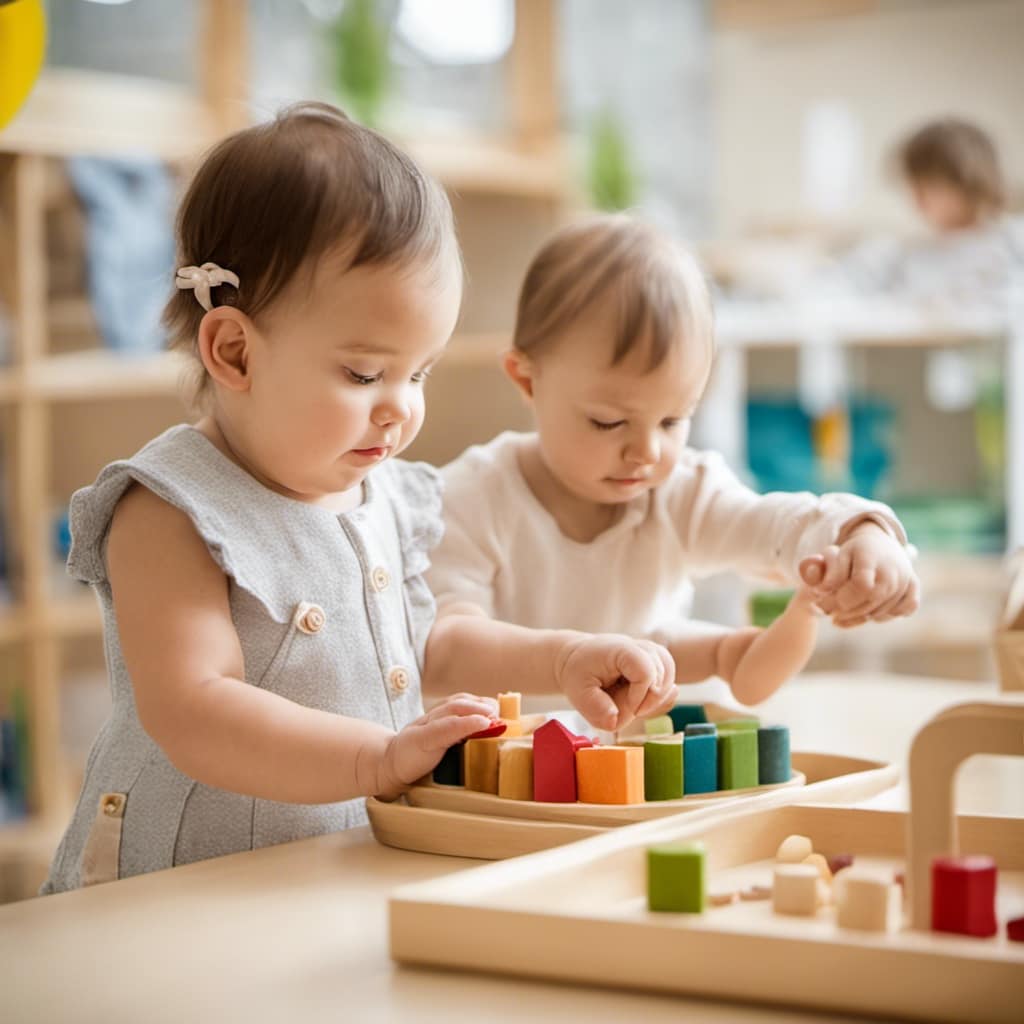
Stackable baskets are another option, providing a versatile and space-saving solution. They allow for easy access to toys and can be easily moved around. However, they may not offer as much visibility as clear plastic bins.
Ultimately, the choice of storage container material depends on your personal preferences and needs.
Labeling and Categorizing Toys
Labeling and categorizing toys helps me keep everything organized and easily accessible. When it comes to toy labeling techniques, one effective method is organizing toys by age groups.
This not only makes it easier for me to find the right toys for my child’s development stage, but it also helps my child understand which toys are appropriate for them to play with.
I use color-coded labels or picture labels on toy bins to clearly indicate which toys belong to which age group. For example, I might use blue labels for toys suitable for babies, yellow labels for toddlers, and green labels for preschoolers.
This simple system allows me to quickly locate the right toys and ensures that my child is playing with toys that are safe and engaging for their age.
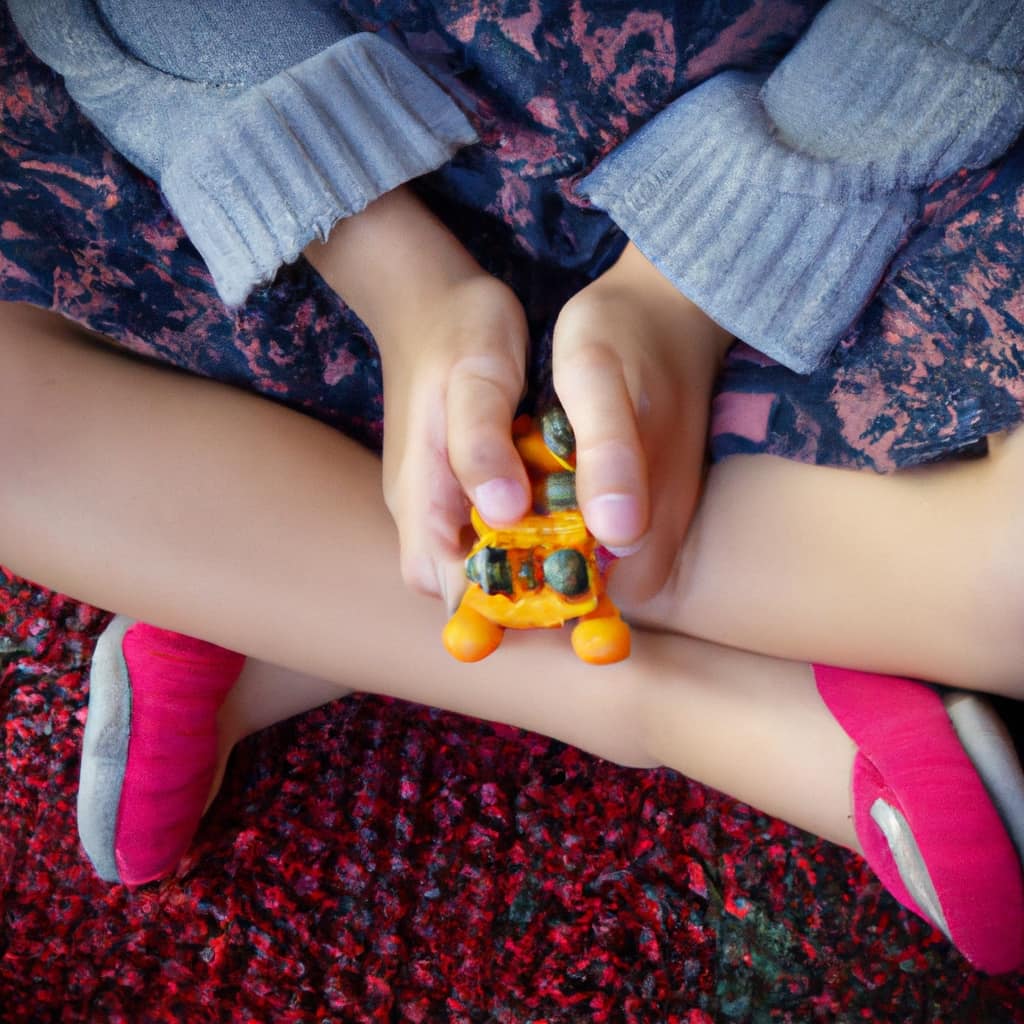
Implementing a Toy Rotation System
Implementing a toy rotation system has been a game-changer for keeping my child engaged and preventing boredom with their toys. The benefits of toy rotation for preschoolers are numerous.
First, it allows them to have a fresh selection of toys to play with, sparking their creativity and imagination.
Second, it teaches them the value of decision-making and ownership as they are involved in selecting which toys to rotate.
To involve children in the toy rotation process, I use strategies like making it a fun and interactive activity. I let my child choose which toys they want to keep out and which ones to put away. I also incorporate a song or a timer to make cleanup time enjoyable.
Creating an Organized Cleanup Routine
Creating a consistent and efficient cleanup routine has been crucial in maintaining an organized play area for my child.
By involving children in the cleanup process, I am not only teaching them responsibility but also fostering a sense of ownership over their play space.
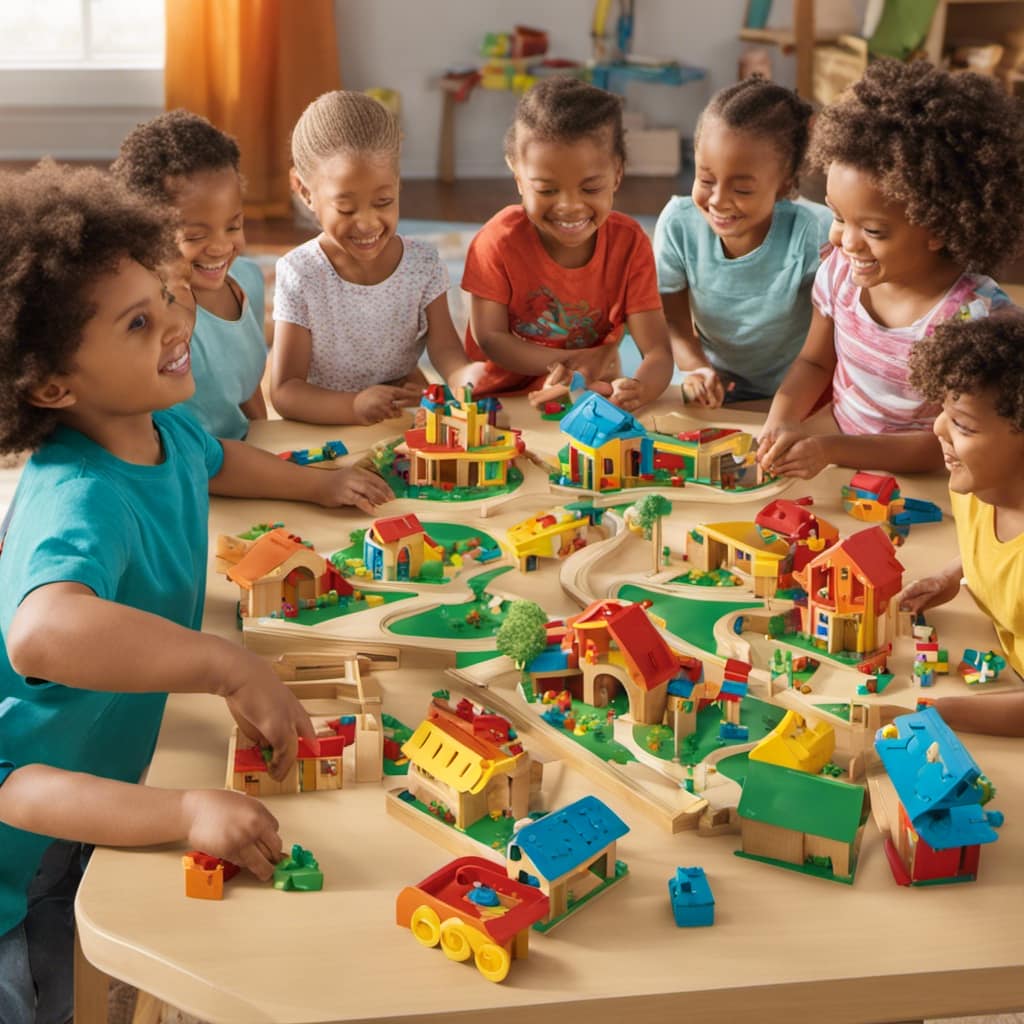
I have found that giving them specific tasks, such as putting away their toys or organizing their books, helps them develop important life skills while keeping the area tidy.
It’s important to make the cleanup routine fun and enjoyable by incorporating a playful song or turning it into a game with timers and rewards.
Maximizing Storage Space in the Playroom
Maximizing storage space in my playroom has been a game-changer for keeping everything organized and easily accessible. One of the best ways to do this is by utilizing vertical space and utilizing toy storage hacks.
Instead of just relying on traditional shelving, I have added hanging organizers for small toys and art supplies. This not only saves floor space but also keeps these items within reach.
Another trick I’ve found helpful is using underbed storage to keep toys organized and utilize hidden space. This is especially useful for larger toys or items that are not used as frequently.
By creating a toy display area with shelves or bins, I can showcase favorite toys while keeping them tidy.
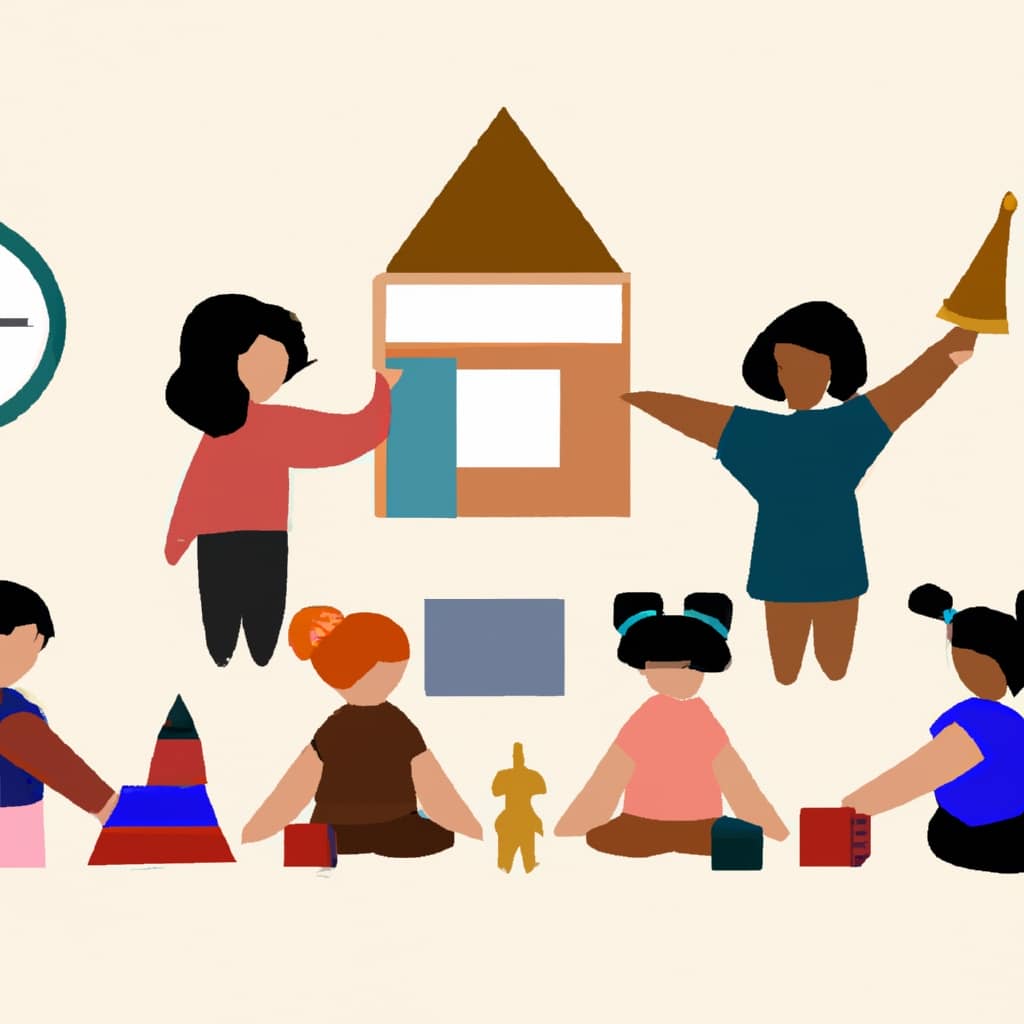
Lastly, I’ve discovered the benefits of utilizing hidden storage space with pegboards, hanging shoe organizers, and hooks or baskets. These hacks help me make the most of every nook and cranny in the playroom.
Utilizing Wall Storage Solutions
Utilizing wall storage solutions has been a game-changer in my playroom for keeping toys organized and accessible. Here are some creative wall displays for toys and DIY wall storage ideas that have made a difference:
-
Hanging organizers: These are perfect for small toys and art supplies. They keep everything in one place and make it easy to find what you need.
-
Shelves and hooks: Installing shelves and hooks on the walls provides a great way to display toys and keep them off the floor. Plus, it adds a decorative touch to the room.
-
Pegboards and hanging shoe organizers: These are versatile options that can hold a variety of toys, from small cars to dolls. They maximize storage space and keep everything within reach.
-
Baskets and bins: Mounting baskets and bins on the wall is a simple and effective solution. It keeps toys organized and accessible, and also adds a decorative element to the playroom.
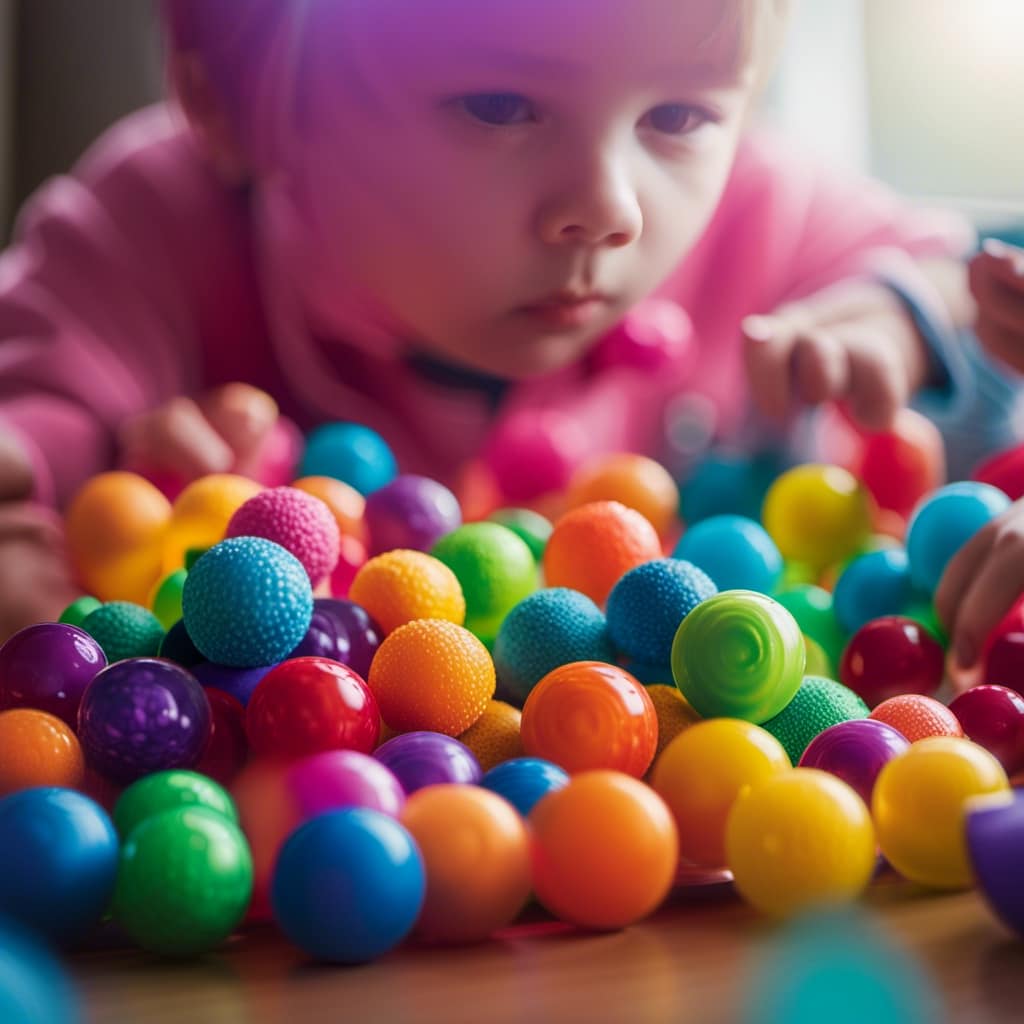
With these wall storage solutions, my playroom is now clutter-free and toys are easy to find and put away.
Organizing Specific Toy Categories
When organizing specific toy categories, I find it helpful to store stuffed animals with hanging storage nets or large baskets. This keeps them off the floor and helps to maximize storage space.
For arts and crafts supplies, I recommend using clear plastic bins or containers and labeling each one. This makes it easy to see what you have and find what you need.
When it comes to organizing outdoor toys, I suggest using a designated space in the garage or backyard. This could be a storage shed, a weatherproof bin, or even hooks on the wall. The key is to keep these toys separate from indoor toys and easily accessible for outdoor playtime.
Benefits of Toy Organization in Preschool
I’ve noticed that toy organization in preschool classrooms helps create a structured environment that promotes learning and independence. It’s important to involve children in the organization process as it teaches them valuable skills and fosters a sense of ownership.
Here are some benefits of toy rotation and involving children in the organization:
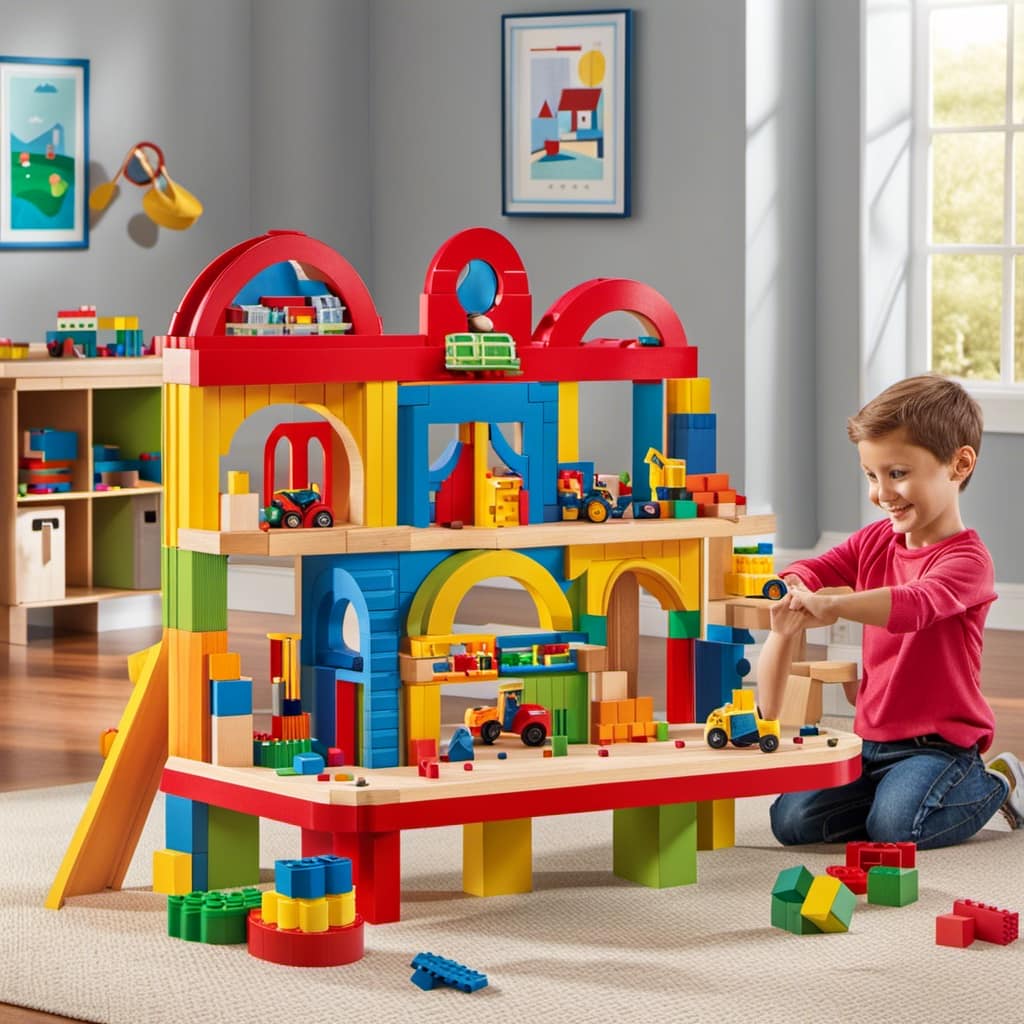
- Stimulates Creativity: By rotating toys, children are exposed to a fresh selection, sparking their creativity and imagination.
- Prevents Boredom: Regularly rotating toys prevents children from getting bored with the same toys, keeping their interest and engagement high.
- Teaches Decision-Making: Involving children in selecting toys for rotation helps them develop decision-making skills and a sense of responsibility.
- Promotes Independence: By labeling bins and teaching children where toys belong, they learn to clean up after themselves and become more independent.
Montessori-Inspired Toy Storage Tips
When it comes to organizing toys in a Montessori-inspired way, two key strategies are toy rotation and toy labeling and categorization.
Toy rotation involves regularly swapping out a selection of toys to keep things fresh and engaging for children. This helps prevent boredom and encourages creativity and imagination.
As for toy labeling and categorization, it’s important to clearly label toy bins with picture labels or color coding to promote independence and make it easier for children to find and put away their toys. Categorizing toys into different bins based on their type or theme also helps children develop organization skills and makes cleanup time more efficient.
Creating a Functional and Playful Toy Storage System
To create a functional and playful toy storage system, I can utilize wall storage solutions with shelves and hooks to maximize storage space and keep the play area organized. This not only provides easy access to toys but also adds a decorative element to the room.
Here are some ways to incorporate sensory elements in toy storage:
- Use colorful bins or baskets that stimulate visual senses.
- Incorporate textured fabric bins or containers for a tactile experience.
- Hang a sensory wall panel with different textures, such as fur or Velcro, for children to explore.
- Add scented sachets or essential oils to the storage area to engage the sense of smell.
Engaging children in DIY toy storage projects can be a fun and educational experience. Here are some ideas:
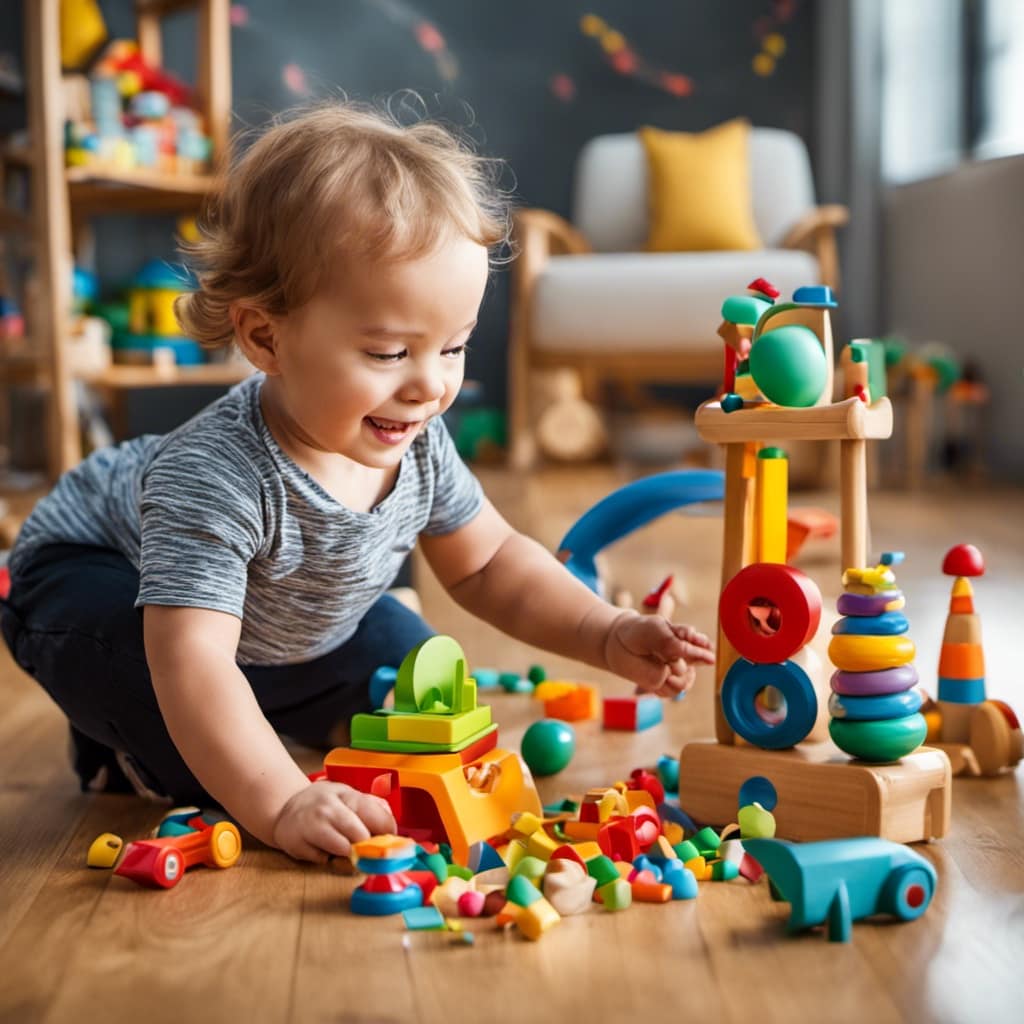
- Encourage children to decorate their own storage bins using stickers, paint, or markers.
- Involve them in creating personalized labels for the toy bins.
- Let them choose the color or design of the shelving or hooks for their play area.
- Teach them how to organize and sort their toys into different categories, empowering them to take responsibility for their space.
Frequently Asked Questions
How Can I Involve My Child in the Process of Choosing Storage Containers for Their Toys?
I involve my child in toy storage by letting them choose their own storage containers. It gives them a sense of ownership and responsibility. We look for child-friendly options that are easy to access and organize.
What Are Some Creative Ways to Label and Categorize Toys for Easy Visibility and Independence?
Some creative ways to label and categorize toys for easy visibility and independence include using picture labels or color coding on toy bins. These labeling methods help children identify and find their toys easily.
How Often Should I Rotate My Child’s Toys and How Do I Decide Which Ones to Rotate?
I rotate my child’s toys every few weeks to keep them engaged and prevent boredom. I choose which ones to rotate based on their interests and developmental needs. It helps with their creativity and cognitive skills. To declutter, I donate unused toys.
What Are Some Strategies for Making Cleanup Time Fun and Engaging for My Child?
To make cleanup time fun and engaging for my child, I incorporate fun toy cleanup games and play upbeat music for dancing while we clean. It keeps them entertained and motivated to tidy up their toys.
Are There Any Specific Storage Solutions for Organizing and Displaying Toy Collections, Such as Stuffed Animals or Board Games?
There are various storage solutions for organizing and displaying toy collections, like using hanging storage nets for stuffed animals and labeled compartments for board games. Art supplies can be stored in containers with clear labels.
Conclusion
After thoroughly exploring the topic of preschool toy storage and organization, it’s evident that implementing an effective system can greatly benefit both children and educators.
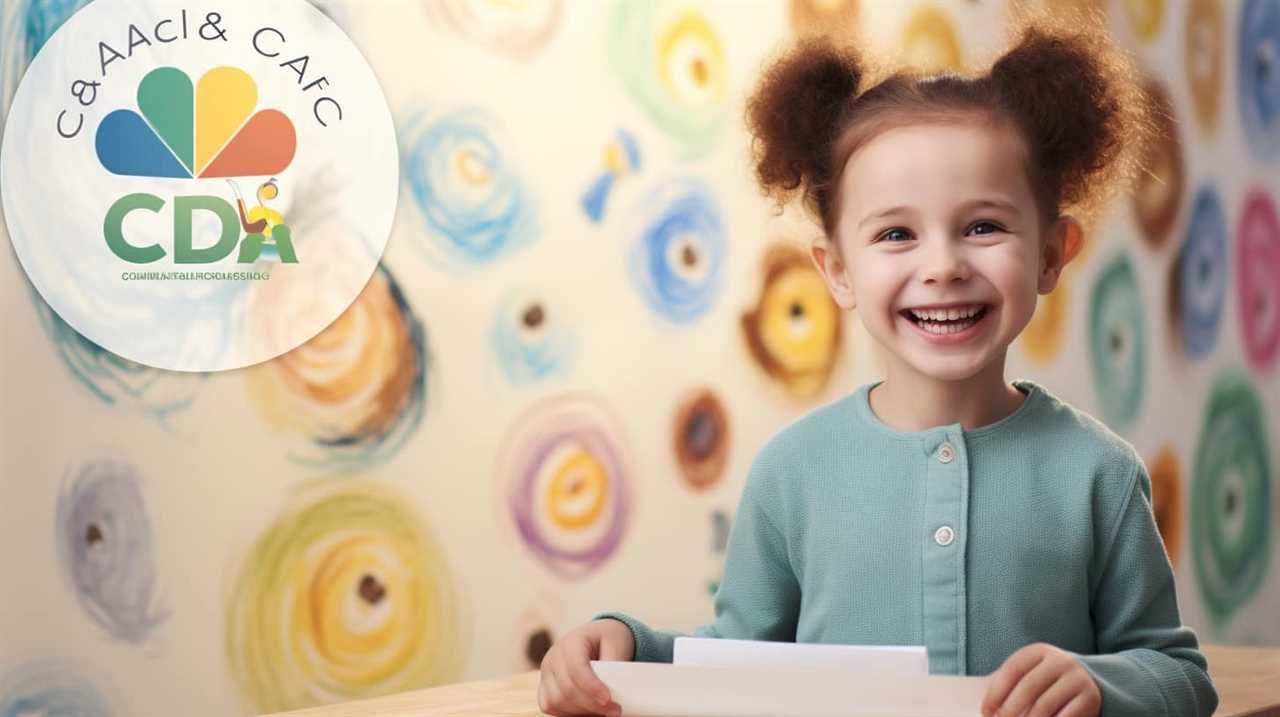
By utilizing the right storage containers, labeling and categorizing toys, implementing a toy rotation system, and creating an organized cleanup routine, preschools can create a playful and engaging environment.
Maximizing storage space and organizing specific toy categories further enhances the functionality of the playroom.
Overall, a well-organized toy storage system promotes a sense of order and allows for seamless play and learning experiences.

